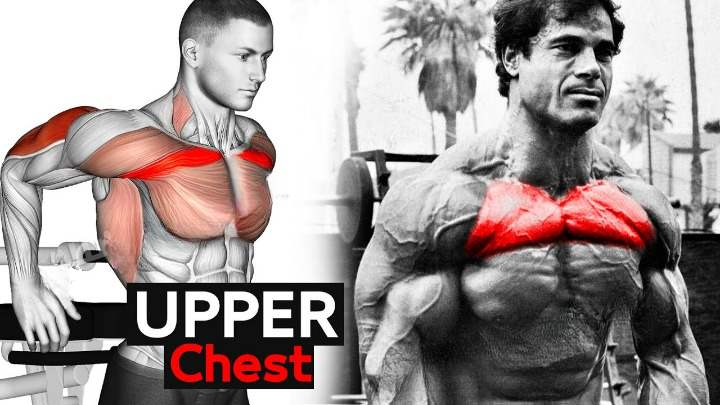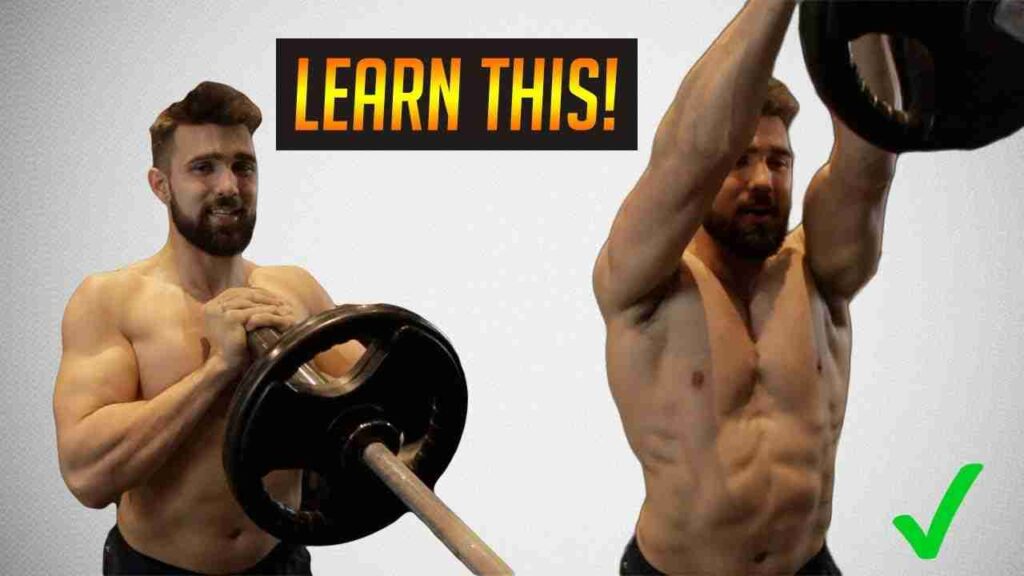Introduction
Are you tired of struggling to build a well-defined upper chest at the gym? If you prefer to work out in the comfort of your home or simply want to explore an effective and accessible way to target your upper chest muscles, then you’ve come to the right place. Welcome to our comprehensive guide on “Upper Chest Calisthenics” – the key to achieving a strong, chiseled upper body using only your body weight.
SHOP FOR THE PUSH-UP BARS ON AMAZON
In this easy-to-follow and informative article, we will unravel the secrets of upper chest calisthenics, explaining the science behind it, showcasing essential exercises, and providing you with a step-by-step plan to craft your upper chest workout routine. Whether you’re a beginner looking to get started or an advanced enthusiast seeking to fine-tune your technique, we’ve got you covered.
Understanding Upper Chest Anatomy
To effectively target and develop your upper chest through calisthenics, it’s crucial to have a good grasp of the anatomy involved. The upper chest, also known as the clavicular portion of the pectoralis major muscle, plays a significant role in shaping your chest and giving it a fuller, more sculpted appearance.
What is the Upper Chest?
The upper chest is the uppermost portion of the pectoralis major muscle, which is the large chest muscle that gives your chest its shape. It is situated just below your collarbone or clavicle. The pectoralis major muscle has two distinct portions:
- Clavicular Head: This is the upper part of the pectoralis major, often referred to as the “upper chest.” It originates from the clavicle and attaches to the upper arm bone (humerus).
- Sternal Head: This is the lower part of the pectoralis major, responsible for the lower chest development. It originates from the sternum and also attaches to the humerus.
Why is it Important to Target the Upper Chest?
- Balanced Aesthetics: Developing your upper chest is essential for achieving a well-balanced and aesthetically pleasing chest. Neglecting this area can lead to an imbalanced appearance, with a bulkier lower chest and underdeveloped upper chest.
- Functional Strength: A strong upper chest is not just about looks; it also contributes to functional strength. Activities like pushing, lifting, and even posture rely on the upper chest’s strength and stability.
- Injury Prevention: A well-developed upper chest can help prevent injuries, especially in activities involving the shoulder joint. It provides support and stability to the shoulder girdle.
- Enhanced Athletic Performance: Athletes, including swimmers, gymnasts, and weightlifters, benefit from upper chest strength as it enhances their performance in various sports.
The Science Behind Upper Chest Calisthenics
To effectively build and sculpt your upper chest through calisthenics, it’s crucial to grasp the science behind muscle growth and the principles that drive results.
How Do Muscles Grow?
Muscle growth, also known as hypertrophy, occurs when muscle fibers undergo stress or damage during resistance training. This stress triggers a series of physiological responses that lead to muscle repair and growth. Here’s a simplified breakdown of the process:
- Muscle Fiber Stress: When you perform resistance exercises, such as upper chest calisthenics, you create micro-tears in the muscle fibers, primarily in the targeted upper chest muscles.
- Inflammatory Response: The body responds to these micro-tears by initiating an inflammatory process. This inflammation is essential for repairing and strengthening the muscle fibers.
- Protein Synthesis: The body synthesizes new muscle proteins (primarily myofibrillar and sarcoplasmic proteins) to repair and reinforce the damaged muscle fibers.
- Muscle Growth: Over time, as you consistently challenge your muscles through progressive overload (increasing resistance or intensity), they adapt by growing in size and strength.
Importance of Progressive Overload in Calisthenics
Progressive overload is a fundamental concept in strength training, including calisthenics. It involves gradually increasing the resistance or difficulty of exercises to continue stimulating muscle growth. Here’s why progressive overload is crucial for upper chest calisthenics success:
- Continued Growth: If you perform the same calisthenics routine with the same intensity over and over, your muscles will adapt and stop growing. Progressive overload keeps the challenge level high, prompting muscle adaptation.
- Strength Development: As you increase the resistance or intensity, not only do your muscles grow, but your strength also improves. This is particularly important for advanced upper chest calisthenics exercises.
- Plateau Prevention: Without progressive overload, you’re likely to hit a plateau where your progress stalls. By consistently challenging your muscles, you can overcome plateaus and keep making gains.
Essential Upper Chest Calisthenics Exercises
To develop a well-rounded upper chest, you need a repertoire of effective calisthenics exercises. Here are some essential upper chest exercises that will help you achieve your fitness goals:
1. Push-Ups
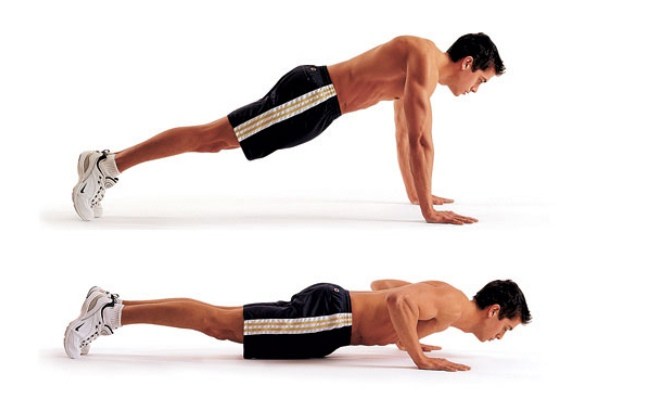
Push-ups are the foundation of upper chest calisthenics. They engage your entire chest, but with a few modifications, you can focus more on the upper chest.
How to do it:
- Start in a plank position with your hands shoulder-width apart.
- Lower your body by bending your elbows until your chest nearly touches the ground.
- Push back up to the starting position.
- To target the upper chest, elevate your feet on a stable surface like a bench.
2. Incline Push-Ups
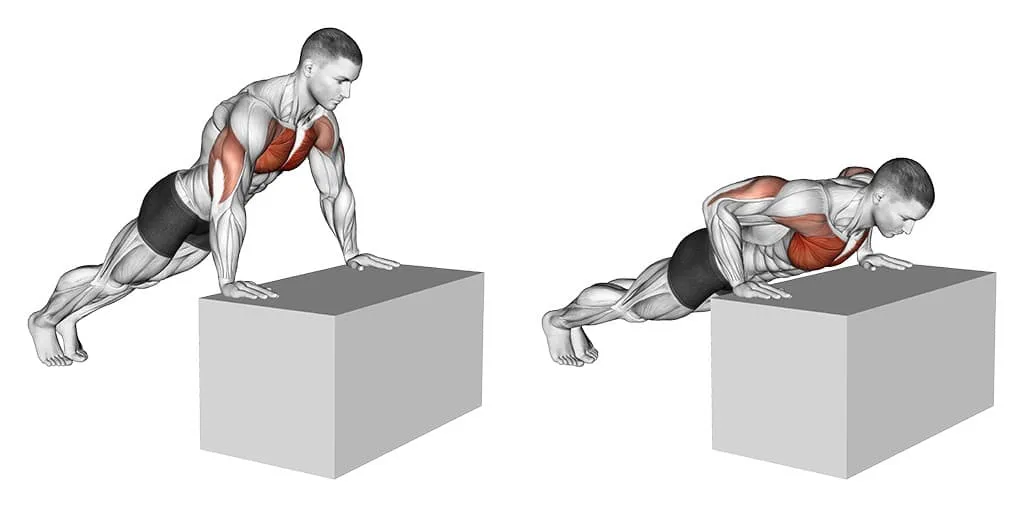
Incline push-ups place more emphasis on the upper chest compared to standard push-ups.
How to do it:
- Position yourself facing a bench or any elevated surface.
- Place your hands on the bench, slightly wider than shoulder-width apart.
- Lower your body by bending your elbows until your chest nearly touches the bench.
- Push back up to the starting position.
3. Decline Push-Ups
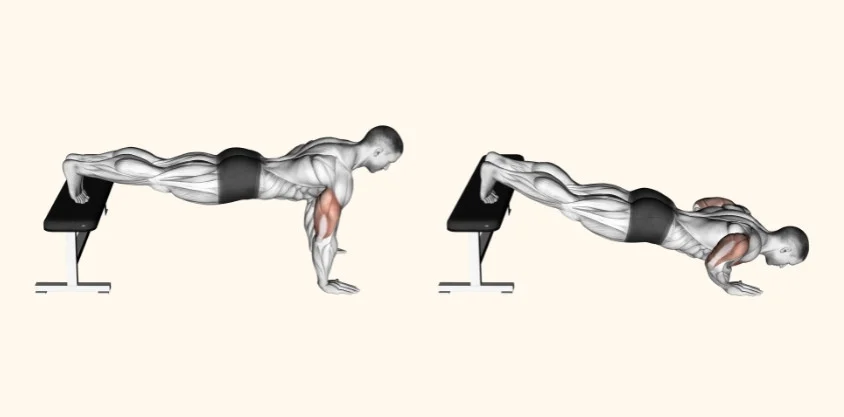
Decline push-ups shift the focus to the upper chest by elevating your feet instead of your hands.
How to do it:
- Find a stable surface to place your feet on, such as a bench or step.
- Assume a push-up position with your hands on the ground and your feet elevated.
- Lower your body by bending your elbows until your chest is close to the ground.
- Push back up to the starting position.
4. Diamond Push-Ups

Diamond push-ups are a challenging variation that targets the upper chest and triceps.
How to do it:
- Form a diamond shape with your hands by touching your thumbs and index fingers.
- Get into a standard push-up position.
- Lower your body while keeping your elbows close to your sides.
- Push back up to the starting position.
5. Wide-Grip Push-Ups
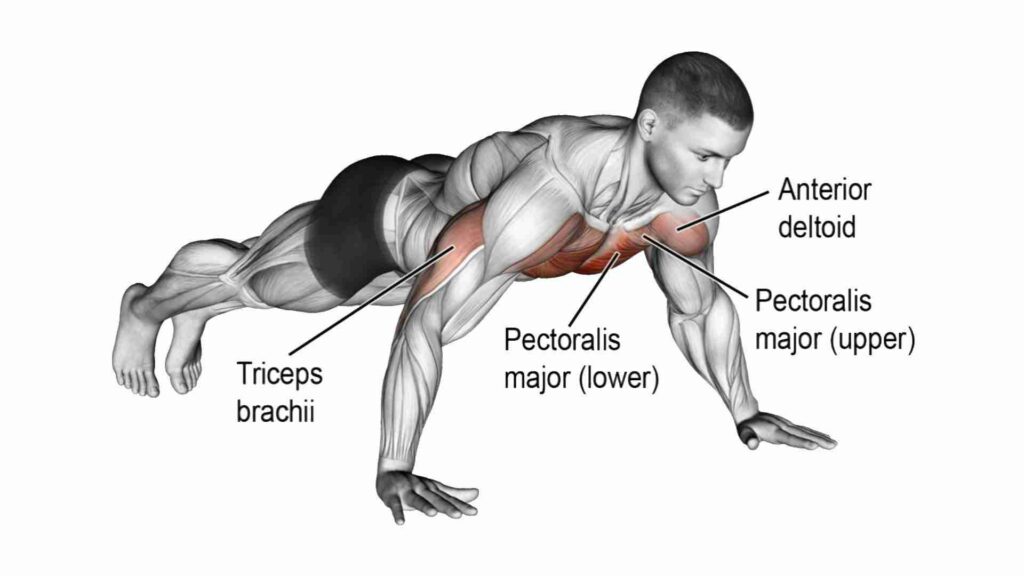
Wider hand placement in wide-grip push-ups increases upper chest engagement.
How to do it:
- Place your hands wider than shoulder-width apart.
- Maintain a straight body line and perform push-ups as usual.
6. Archer Push-Ups

Archer push-ups work one side of the chest at a time, helping to isolate and develop the upper chest muscles.
How to do it:
- Assume a standard push-up position.
- Move one hand out to the side while keeping the other hand under your shoulder.
- Lower your body towards the side with the extended arm.
- Push back up and switch sides.
7. Handstand Push-Ups (for advanced practitioners)
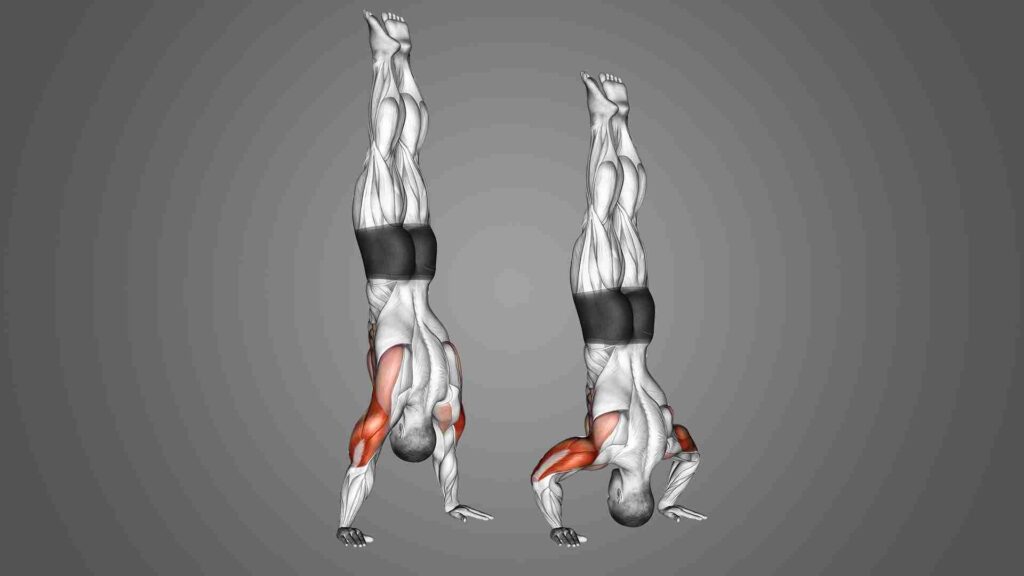
Handstand push-ups are an advanced exercise that not only targets the upper chest but also challenges your balance and stability.
How to do it:
- Kick up into a handstand position against a wall.
- Lower your body by bending your arms until your head lightly touches the ground.
- Push back up to the handstand position.
SHOP FOR THE RESISTANCE BAND ON AMAZON
Incorporate these exercises into your upper chest calisthenics routine, gradually increasing the intensity and difficulty as you progress. Remember to maintain proper form to maximize the effectiveness of each exercise.
Injury Prevention and Safety Tips
In any fitness regimen, safety should always be a top priority. Here are some crucial injury prevention and safety tips to keep in mind while engaging in upper chest calisthenics:
- Warm-up and Stretch: Begin your workout with a proper warm-up that includes dynamic stretches. Warming up increases blood flow to your muscles and prepares them for the upcoming exercise, reducing the risk of injury.
- Proper Technique: Always perform exercises with correct form and technique. Using improper form can strain your muscles and joints, increasing the likelihood of injury. Pay close attention to your body positioning, hand placement, and range of motion.
- Progress Gradually: Avoid the temptation to push your limits too quickly. Gradually increase the intensity, duration, or difficulty of your workouts over time. This approach minimizes the risk of overuse injuries and allows your body to adapt safely.
- Cross-Train: Incorporating a variety of exercises into your routine can help prevent overuse injuries by engaging different muscle groups and reducing strain on specific areas.
- Stay Hydrated: Proper hydration is crucial for muscle function and overall well-being. Dehydration can lead to cramps and muscle strains, so drink enough water before, during, and after your workouts.
- Use Proper Equipment: If you’re using equipment like parallel bars or parallettes, ensure they are stable and in good condition. Wobbly or damaged equipment can lead to accidents.
- Cool Down: Finish your workouts with a cool-down routine that includes static stretches. Stretching helps improve flexibility and reduces muscle soreness post-exercise.
SHOP FOR THE FITNESS TRACKER ON AMAZON
Remember that preventing injuries is essential for long-term progress. Don’t rush your journey to a chiseled upper chest.
Diet and Nutrition for Upper Chest Development
Your diet plays a pivotal role in your journey towards upper chest development. To ensure you’re making the most out of your upper chest calisthenics routine, it’s crucial to fuel your body with the right nutrients.
1. Protein Intake
Protein is the building block of muscle. To foster upper chest development, aim to consume an adequate amount of protein daily. Sources like lean meats, poultry, fish, eggs, dairy, and plant-based options such as tofu and legumes are excellent choices. A general guideline is to consume at least 1.2 to 2.2 grams of protein per kilogram of body weight per day.
2. Carbohydrates
Carbohydrates are your body’s primary energy source. They provide the fuel needed for intense calisthenics workouts. Opt for complex carbohydrates like whole grains, fruits, and vegetables. These sources provide sustained energy levels, helping you power through your workouts.
3. Healthy Fats
Don’t shy away from healthy fats, as they are essential for overall health and hormone production. Avocado, nuts, seeds, and olive oil are excellent sources of healthy fats. These fats help with the absorption of fat-soluble vitamins crucial for muscle development.
4. Hydration
Staying hydrated is often underestimated but critical for muscle function. Dehydration can lead to decreased performance and muscle cramps. Aim to drink enough water throughout the day, especially before, during, and after your workouts.
5. Meal Timing
Timing your meals can make a difference in your performance and recovery. Consider having a balanced meal 1-2 hours before your workout to ensure you have enough energy. After your workout, consuming a post-workout meal rich in protein and carbohydrates aids in muscle recovery and growth.
6. Supplements
While it’s best to obtain most nutrients from whole foods, supplements can be beneficial to fill nutritional gaps. Whey protein, creatine, and branched-chain amino acids (BCAAs) are commonly used by athletes and calisthenics enthusiasts to support muscle growth and recovery.
SHOP FOR THE BEST PROTEIN SUPPLEMENTS ON AMAZON
Remember that consistency is key when it comes to nutrition for upper chest development. Tailor your diet to suit your individual needs and goals, and consult with a registered dietitian or nutritionist for personalized guidance.
FAQs
Q 1. What is the optimal rep and set range for upper chest calisthenics?
Ans. The optimal rep and set range can vary depending on your fitness level and goals. However, a good starting point for beginners is 3-4 sets of 8-12 repetitions for each exercise. As you progress, you can increase the number of sets and reps or incorporate more challenging variations.
Q 2. How often should I train my upper chest?
Ans. It’s recommended to train your upper chest 2-3 times a week with at least one rest day in between workouts. This allows your muscles to recover and grow while minimizing the risk of overtraining.
Q 3. Can women benefit from upper chest calisthenics?
Ans. Absolutely! Upper chest calisthenics is not gender-specific. Both men and women can benefit from these exercises to build strength and muscle in the upper chest area. Women can achieve a toned and sculpted upper body through consistent training.
Q 4. How long does it take to see results from upper chest calisthenics?
Ans. The timeline for seeing results varies from person to person and depends on factors like your starting fitness level, consistency in training, and nutrition. Generally, you can expect to see noticeable improvements in 4-8 weeks. For significant muscle growth and definition, it may take several months of dedicated training.
Q 5. Is it necessary to have equipment for upper chest calisthenics?
Ans. No, you can perform effective upper chest calisthenics exercises without any equipment. Bodyweight exercises like push-ups, incline push-ups, and decline push-ups are excellent choices. However, you can incorporate equipment like parallel bars or rings for advanced variations if available.
Q 6. Can upper chest calisthenics be combined with other workouts?
Ans. Yes, you can integrate upper chest calisthenics into a well-rounded fitness routine. Combining it with lower body exercises, core workouts, and cardio can provide a comprehensive approach to fitness. Just be sure to schedule your workouts to allow for proper rest and recovery.
Conclusion
In conclusion, mastering upper chest calisthenics is not only achievable but also incredibly rewarding. With a solid understanding of the upper chest anatomy, the science behind muscle growth, and a diverse range of effective exercises at your disposal, you have the keys to sculpting a powerful and chiseled upper body.
Remember, consistency is key, and gradual progression will be your best friend on this journey. Design a workout plan that suits your fitness level, incorporate proper form and technique, and fuel your body with the right nutrition. And don’t forget to rest and recover to prevent injuries and promote muscle growth.

Good day, and welcome to Fitthour. My name is Shubham Vijay, and I am a certified personal trainer and nutrition coach with 6 years of experience in the fitness industry. At Fitthour, we specialize in types of training, such as strength training, cardio, or HIIT, and our mission is to help clients achieve their fitness goals and improve their overall health.

